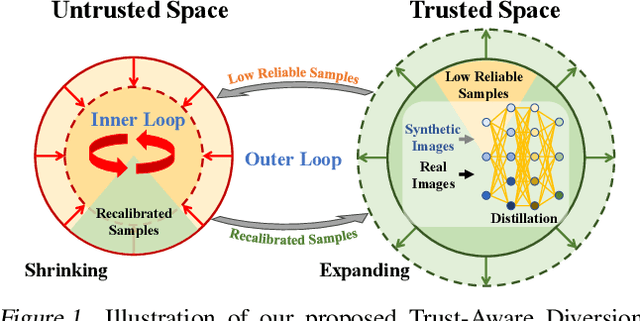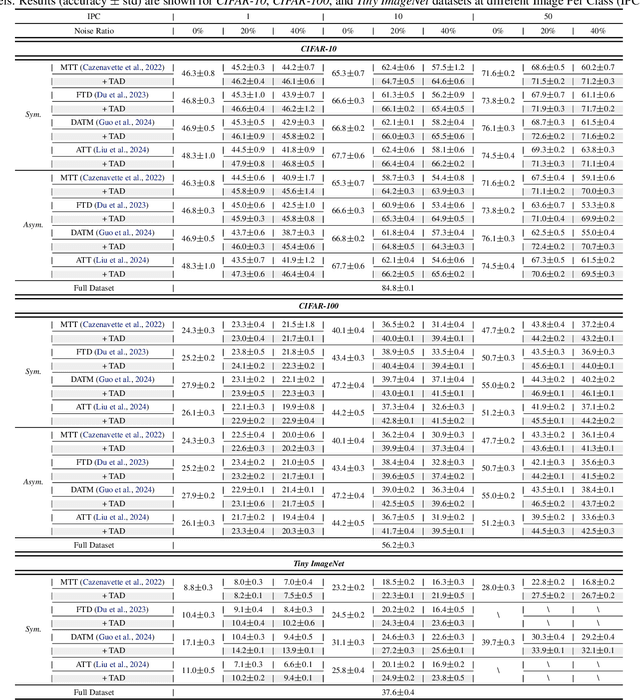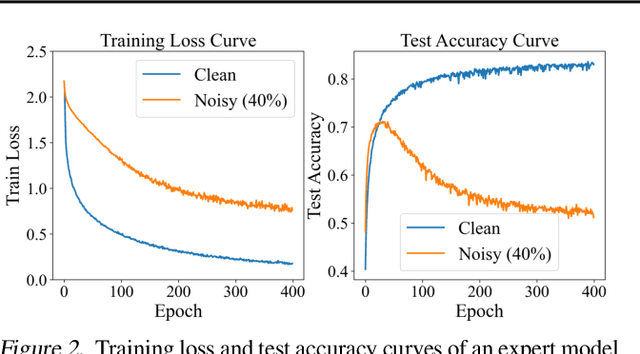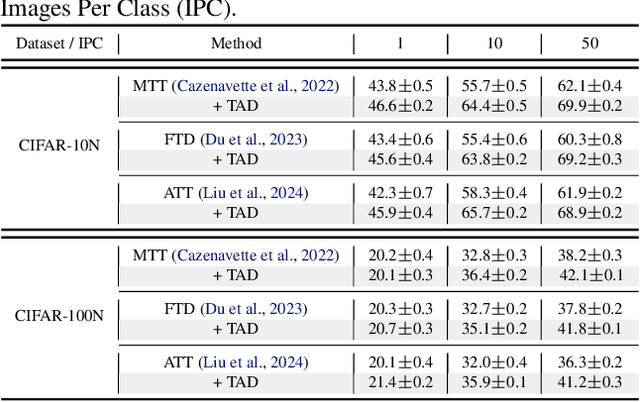Xiaofeng Cao
Hybrid Quantum-Classical Neural Networks for Few-Shot Credit Risk Assessment
Sep 17, 2025Abstract:Quantum Machine Learning (QML) offers a new paradigm for addressing complex financial problems intractable for classical methods. This work specifically tackles the challenge of few-shot credit risk assessment, a critical issue in inclusive finance where data scarcity and imbalance limit the effectiveness of conventional models. To address this, we design and implement a novel hybrid quantum-classical workflow. The methodology first employs an ensemble of classical machine learning models (Logistic Regression, Random Forest, XGBoost) for intelligent feature engineering and dimensionality reduction. Subsequently, a Quantum Neural Network (QNN), trained via the parameter-shift rule, serves as the core classifier. This framework was evaluated through numerical simulations and deployed on the Quafu Quantum Cloud Platform's ScQ-P21 superconducting processor. On a real-world credit dataset of 279 samples, our QNN achieved a robust average AUC of 0.852 +/- 0.027 in simulations and yielded an impressive AUC of 0.88 in the hardware experiment. This performance surpasses a suite of classical benchmarks, with a particularly strong result on the recall metric. This study provides a pragmatic blueprint for applying quantum computing to data-constrained financial scenarios in the NISQ era and offers valuable empirical evidence supporting its potential in high-stakes applications like inclusive finance.
FOCUS: Frequency-Optimized Conditioning of DiffUSion Models for mitigating catastrophic forgetting during Test-Time Adaptation
Aug 20, 2025Abstract:Test-time adaptation enables models to adapt to evolving domains. However, balancing the tradeoff between preserving knowledge and adapting to domain shifts remains challenging for model adaptation methods, since adapting to domain shifts can induce forgetting of task-relevant knowledge. To address this problem, we propose FOCUS, a novel frequency-based conditioning approach within a diffusion-driven input-adaptation framework. Utilising learned, spatially adaptive frequency priors, our approach conditions the reverse steps during diffusion-driven denoising to preserve task-relevant semantic information for dense prediction. FOCUS leverages a trained, lightweight, Y-shaped Frequency Prediction Network (Y-FPN) that disentangles high and low frequency information from noisy images. This minimizes the computational costs involved in implementing our approach in a diffusion-driven framework. We train Y-FPN with FrequencyMix, a novel data augmentation method that perturbs the images across diverse frequency bands, which improves the robustness of our approach to diverse corruptions. We demonstrate the effectiveness of FOCUS for semantic segmentation and monocular depth estimation across 15 corruption types and three datasets, achieving state-of-the-art averaged performance. In addition to improving standalone performance, FOCUS complements existing model adaptation methods since we can derive pseudo labels from FOCUS-denoised images for additional supervision. Even under limited, intermittent supervision with the pseudo labels derived from the FOCUS denoised images, we show that FOCUS mitigates catastrophic forgetting for recent model adaptation methods.
Trust-Aware Diversion for Data-Effective Distillation
Feb 07, 2025



Abstract:Dataset distillation compresses a large dataset into a small synthetic subset that retains essential information. Existing methods assume that all samples are perfectly labeled, limiting their real-world applications where incorrect labels are ubiquitous. These mislabeled samples introduce untrustworthy information into the dataset, which misleads model optimization in dataset distillation. To tackle this issue, we propose a Trust-Aware Diversion (TAD) dataset distillation method. Our proposed TAD introduces an iterative dual-loop optimization framework for data-effective distillation. Specifically, the outer loop divides data into trusted and untrusted spaces, redirecting distillation toward trusted samples to guarantee trust in the distillation process. This step minimizes the impact of mislabeled samples on dataset distillation. The inner loop maximizes the distillation objective by recalibrating untrusted samples, thus transforming them into valuable ones for distillation. This dual-loop iteratively refines and compensates for each other, gradually expanding the trusted space and shrinking the untrusted space. Experiments demonstrate that our method can significantly improve the performance of existing dataset distillation methods on three widely used benchmarks (CIFAR10, CIFAR100, and Tiny ImageNet) in three challenging mislabeled settings (symmetric, asymmetric, and real-world).
TsCA: On the Semantic Consistency Alignment via Conditional Transport for Compositional Zero-Shot Learning
Aug 16, 2024



Abstract:Compositional Zero-Shot Learning (CZSL) aims to recognize novel \textit{state-object} compositions by leveraging the shared knowledge of their primitive components. Despite considerable progress, effectively calibrating the bias between semantically similar multimodal representations, as well as generalizing pre-trained knowledge to novel compositional contexts, remains an enduring challenge. In this paper, our interest is to revisit the conditional transport (CT) theory and its homology to the visual-semantics interaction in CZSL and further, propose a novel Trisets Consistency Alignment framework (dubbed TsCA) that well-addresses these issues. Concretely, we utilize three distinct yet semantically homologous sets, i.e., patches, primitives, and compositions, to construct pairwise CT costs to minimize their semantic discrepancies. To further ensure the consistency transfer within these sets, we implement a cycle-consistency constraint that refines the learning by guaranteeing the feature consistency of the self-mapping during transport flow, regardless of modality. Moreover, we extend the CT plans to an open-world setting, which enables the model to effectively filter out unfeasible pairs, thereby speeding up the inference as well as increasing the accuracy. Extensive experiments are conducted to verify the effectiveness of the proposed method.
Reframing the Relationship in Out-of-Distribution Detection
May 27, 2024Abstract:The remarkable achievements of Large Language Models (LLMs) have captivated the attention of both academia and industry, transcending their initial role in dialogue generation. The utilization of LLMs as intermediary agents in various tasks has yielded promising results, sparking a wave of innovation in artificial intelligence. Building on these breakthroughs, we introduce a novel approach that integrates the agent paradigm into the Out-of-distribution (OOD) detection task, aiming to enhance its robustness and adaptability. Our proposed method, Concept Matching with Agent (CMA), employs neutral prompts as agents to augment the CLIP-based OOD detection process. These agents function as dynamic observers and communication hubs, interacting with both In-distribution (ID) labels and data inputs to form vector triangle relationships. This triangular framework offers a more nuanced approach than the traditional binary relationship, allowing for better separation and identification of ID and OOD inputs. Our extensive experimental results showcase the superior performance of CMA over both zero-shot and training-required methods in a diverse array of real-world scenarios.
Deep Hierarchical Graph Alignment Kernels
May 09, 2024Abstract:Typical R-convolution graph kernels invoke the kernel functions that decompose graphs into non-isomorphic substructures and compare them. However, overlooking implicit similarities and topological position information between those substructures limits their performances. In this paper, we introduce Deep Hierarchical Graph Alignment Kernels (DHGAK) to resolve this problem. Specifically, the relational substructures are hierarchically aligned to cluster distributions in their deep embedding space. The substructures belonging to the same cluster are assigned the same feature map in the Reproducing Kernel Hilbert Space (RKHS), where graph feature maps are derived by kernel mean embedding. Theoretical analysis guarantees that DHGAK is positive semi-definite and has linear separability in the RKHS. Comparison with state-of-the-art graph kernels on various benchmark datasets demonstrates the effectiveness and efficiency of DHGAK. The code is available at Github (https://github.com/EWesternRa/DHGAK).
Dual Expert Distillation Network for Generalized Zero-Shot Learning
Apr 29, 2024Abstract:Zero-shot learning has consistently yielded remarkable progress via modeling nuanced one-to-one visual-attribute correlation. Existing studies resort to refining a uniform mapping function to align and correlate the sample regions and subattributes, ignoring two crucial issues: 1) the inherent asymmetry of attributes; and 2) the unutilized channel information. This paper addresses these issues by introducing a simple yet effective approach, dubbed Dual Expert Distillation Network (DEDN), where two experts are dedicated to coarse- and fine-grained visual-attribute modeling, respectively. Concretely, one coarse expert, namely cExp, has a complete perceptual scope to coordinate visual-attribute similarity metrics across dimensions, and moreover, another fine expert, namely fExp, consists of multiple specialized subnetworks, each corresponds to an exclusive set of attributes. Two experts cooperatively distill from each other to reach a mutual agreement during training. Meanwhile, we further equip DEDN with a newly designed backbone network, i.e., Dual Attention Network (DAN), which incorporates both region and channel attention information to fully exploit and leverage visual semantic knowledge. Experiments on various benchmark datasets indicate a new state-of-the-art.
Mitigating Privacy Risk in Membership Inference by Convex-Concave Loss
Feb 08, 2024



Abstract:Machine learning models are susceptible to membership inference attacks (MIAs), which aim to infer whether a sample is in the training set. Existing work utilizes gradient ascent to enlarge the loss variance of training data, alleviating the privacy risk. However, optimizing toward a reverse direction may cause the model parameters to oscillate near local minima, leading to instability and suboptimal performance. In this work, we propose a novel method -- Convex-Concave Loss, which enables a high variance of training loss distribution by gradient descent. Our method is motivated by the theoretical analysis that convex losses tend to decrease the loss variance during training. Thus, our key idea behind CCL is to reduce the convexity of loss functions with a concave term. Trained with CCL, neural networks produce losses with high variance for training data, reinforcing the defense against MIAs. Extensive experiments demonstrate the superiority of CCL, achieving state-of-the-art balance in the privacy-utility trade-off.
Transductive Reward Inference on Graph
Feb 06, 2024



Abstract:In this study, we present a transductive inference approach on that reward information propagation graph, which enables the effective estimation of rewards for unlabelled data in offline reinforcement learning. Reward inference is the key to learning effective policies in practical scenarios, while direct environmental interactions are either too costly or unethical and the reward functions are rarely accessible, such as in healthcare and robotics. Our research focuses on developing a reward inference method based on the contextual properties of information propagation on graphs that capitalizes on a constrained number of human reward annotations to infer rewards for unlabelled data. We leverage both the available data and limited reward annotations to construct a reward propagation graph, wherein the edge weights incorporate various influential factors pertaining to the rewards. Subsequently, we employ the constructed graph for transductive reward inference, thereby estimating rewards for unlabelled data. Furthermore, we establish the existence of a fixed point during several iterations of the transductive inference process and demonstrate its at least convergence to a local optimum. Empirical evaluations on locomotion and robotic manipulation tasks validate the effectiveness of our approach. The application of our inferred rewards improves the performance in offline reinforcement learning tasks.
Source-Free Unsupervised Domain Adaptation with Hypothesis Consolidation of Prediction Rationale
Feb 02, 2024Abstract:Source-Free Unsupervised Domain Adaptation (SFUDA) is a challenging task where a model needs to be adapted to a new domain without access to target domain labels or source domain data. The primary difficulty in this task is that the model's predictions may be inaccurate, and using these inaccurate predictions for model adaptation can lead to misleading results. To address this issue, this paper proposes a novel approach that considers multiple prediction hypotheses for each sample and investigates the rationale behind each hypothesis. By consolidating these hypothesis rationales, we identify the most likely correct hypotheses, which we then use as a pseudo-labeled set to support a semi-supervised learning procedure for model adaptation. To achieve the optimal performance, we propose a three-step adaptation process: model pre-adaptation, hypothesis consolidation, and semi-supervised learning. Extensive experimental results demonstrate that our approach achieves state-of-the-art performance in the SFUDA task and can be easily integrated into existing approaches to improve their performance. The codes are available at \url{https://github.com/GANPerf/HCPR}.
 Add to Chrome
Add to Chrome Add to Firefox
Add to Firefox Add to Edge
Add to Edge